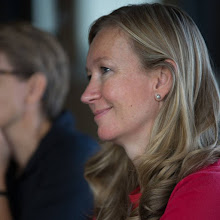Celebrity Twitter
I’ve started work on a new phase of analysis: looking at how celebrities use twitter to construct their identities and a sense of engagement with their audiences. I’ve taken the most recent 1000 tweets from 30 celebrities (15 female, 15 male; half from the UK and half from the US). I’ve separated updating tweets from retweets and direct addresses to other twitter users, leaving me with around 14 000 updates to analyse.
My first round of analysis is to note whether the tweet is a report of an event (or even a series of events), gives the tweeter’s evaluation, asks a question or directs the audience to do something. I haven’t collated the results yet, as I have only just finished this first round of marking up the data, and just for the male celebrities. But I’m already noticing a number of interesting features including:
The use of pronouns to suggest inclusion (e.g. we, our, you)
The use of ‘affective’ or ‘interpersonal’ markers (e.g. emoticons, kisses, laughter)
A great deal of variation in terms of how much personal information (e.g. references to home life and family) compared with professional information (e.g. references to working life) or mainstream media (sports events, television programmes) are contained in the tweets. So Jonathan Ross, Jamie Oliver and Philip Schofield all talk about time and meals spent with their family while Boris Johnson, William Shatner and Arnold Schwarzenegger do not.
My first round of analysis is to note whether the tweet is a report of an event (or even a series of events), gives the tweeter’s evaluation, asks a question or directs the audience to do something. I haven’t collated the results yet, as I have only just finished this first round of marking up the data, and just for the male celebrities. But I’m already noticing a number of interesting features including:
The use of deixis to suggest close proximity to the speaker (e.g. here, this, now, just, about to)
The use of pronouns to suggest inclusion (e.g. we, our, you)
The use of ‘affective’ or ‘interpersonal’ markers (e.g. emoticons, kisses, laughter)
A great deal of variation in terms of how much personal information (e.g. references to home life and family) compared with professional information (e.g. references to working life) or mainstream media (sports events, television programmes) are contained in the tweets. So Jonathan Ross, Jamie Oliver and Philip Schofield all talk about time and meals spent with their family while Boris Johnson, William Shatner and Arnold Schwarzenegger do not.
Lots of questions that could be asked about this, in terms of what difference this might make, why it is relevant (or not), what effect the twitter discourse has on actual public perception of these figures and audience engagement with their various projects. But for now, I need to do some more work on the textual analysis and will post more here when I've got a bit further.
Labels: twitter celebrity language


0 Comments:
Post a Comment
<< Home